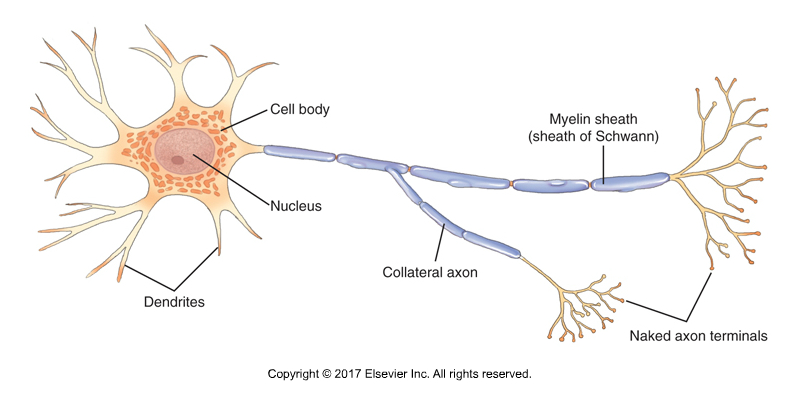Chronic Muscle Pain and Exercise
 Chronic muscle pain is a significant health problem and is associated with an increase in pain during acute physical activity.
Chronic muscle pain is a significant health problem and is associated with an increase in pain during acute physical activity.
Study
A study by researchers from the Universityof Iowa examined if regular physical activity has a role in the development of chronic muscle pain. The study used mice as subjects and divided them into three groups:
- A group of mice engaged inphysical activity on running wheels in their cages for five
- Another group exercised with running wheels in their cages for eight
- A sedentary group without running wheels in their cages.
Chronic muscle pain was inducedby repeated intramuscular injection of pH 4.0 saline. Exercise-enhanced (acute) pain was inducedby combining a 2-hour fatiguing exercise task with a low-dose muscle inflammation (0.03% carrageenan). Acutemuscle inflammation was inducedby 3% carrageenan.
The effects were testedvia the responses of the paw (response frequency) and muscle (withdrawal threshold) to nociceptive (painful) stimuli. Because the rostral ventromedial medulla (RVM) of the brain is involved in chronic pain and exercise-induced analgesia (pain reduction), changes in phosphorylation of the NR1 subunit of the N-methyl-d-aspartate (NMDA) receptor in the RVM were tested.
Results
The results showed that:
- Regular exercise prevents the development of chronic muscle pain and prevents the development of exercise-induced muscle pain.
- Mice that exercised for eight weeks did not develop hyperalgesia (hypersensitization to pain) compared with the mice in the short-term exercise (five days) group or sedentary group.
- The protective effect of exercise was temporary; hyperalgesia returned 13 days after removal of the running wheel.
- Regular exercise does not affect the development of acute pain; eight weeks of exercise did not prevent protective pain in response to acute injury.
The mechanism of chronic muscle pain prevention is by reducing phosphorylation of the NR1 subunit of the NMDA receptor in the central nervous system. The results suggest that regular exercise reduces pain by activation of opioid receptors in descending inhibitory pathways in the central nervous system.
Conclusion
Physical inactivity is a risk factor for the development of chronic muscle pain and may create hyperalgesia (hypersensitivity to pain) in the nervous system.

PERMISSION DR. JOE MUSCOLINO. KINESIOLOGY – THE SKELETAL SYSTEM AND MUSCLE FUNCTION, 3RD EDITION (ELSEVIER, 2017).
Comment by Dr. Joe Muscolino
Concern:
First, I must state that when I first saw this study, I was conflicted as to whether I wanted to post and comment on it. I am not a believer in inducing pain in animals for research. I understand that we derive benefits, yet I am not in favor of animal research of this kind.
Value of Study:
Having said this, the study has been done, so I feel there is value in reporting the results and commenting on it. And the results are clear: inactivity, in other words lack of exercise, is correlated with the occurrence of chronic pain. Or, put another way, exercise decreases the occurrence of chronic pain. This has far-reaching implications for how we treat and counsel our clients, whether we are manual therapists or movement professionals. In fact, to me, it argues in favour of the fields of manual and movement therapy merging more because the benefit of combining manual therapy and movement therapy (exercise) for clients who are experiencing musculoskeletal (myo-fascio-skeletal) pain!
Opioid “Endorphin” Receptors:
The opioid receptors referred to in this study are better known as endorphins (or enkephalins or nociceptins). In fact, the term “endorphin” is short for “endogenous morphine,” meaning morphine found within the body (“endo” means “within”). This term was coined because when it was understood that morphine (and other opiate drugs) could reduce pain, it was posited that if we had receptors in our body for morphine from the outside (exogenous morphine; “exo” means “outside”), then it was concluded that we must have endogenous morphine within our body that these receptors were designed to receive. When these substances within our body were found, they were named “endogenous morphines,” which was then shortened to “endorphins.”
This blog post article was created in collaboration with www.terrarosa.com.au.
Digital COMT
Did you know that Digital COMT (Digital Clinical Orthopedic Manual Therapy), Dr. Joe Muscolino’s continuing education video streaming subscription service for manual therapists and movement professionals, has at present (February of 2019) more than 1,000 video lessons on manual and movement therapy continuing education, including entire folders on massage therapy, stretching, joint mobilization, fitness, Pilates, and yoga. And we add seven (7) new videos lessons each and every week! And nothing ever goes away. There are also folders on Pathomechanics and Anatomy and Physiology, including an entire folder on Cadaver Anatomy… and many, many more on other manual and movement therapy assessment and treatment techniques? Click here for more information.
